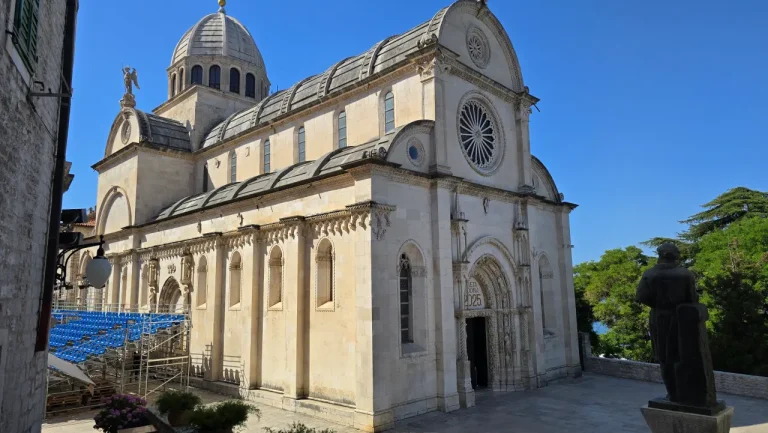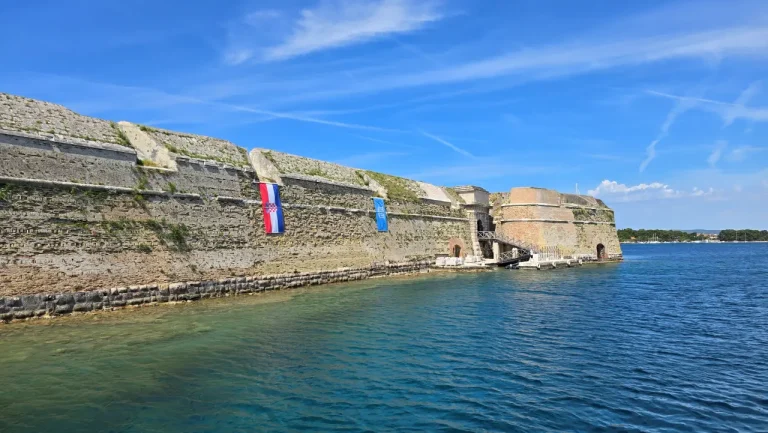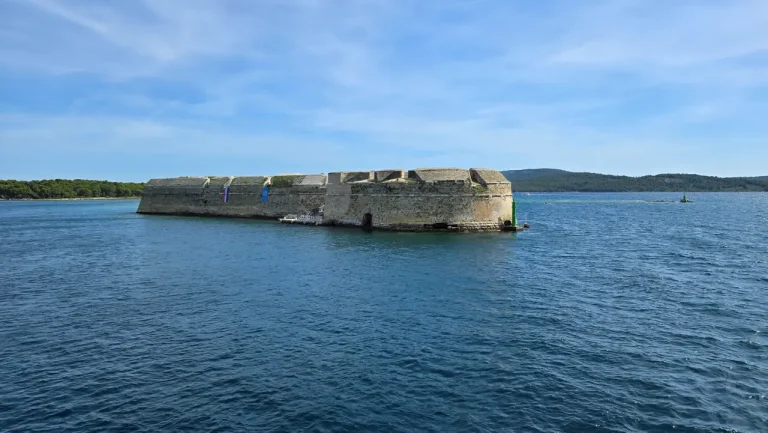Have you ever passed by a place and told yourself, “I need to visit there one day”? That’s exactly how I felt about Krapanj Island, which I’ve admired countless times while driving the coastal road from Split to Šibenik.
Well, guess what? I finally visited Krapanj Island in combination with a trip to Brodarica, the charming town on the mainland just opposite the island. Brodarica is a place I’ve driven through many times, but this time, I had the chance to stay for a few days and truly experience it.
In the video below, you can see highlights of my experience. Below the video, I’ve shared additional details about my visit and some helpful tips for visitors.
Brodarica
Brodarica is located 8 km south of Šibenik, with the village stretching 3 km along the coastline. The main coastal road, D8 (Magistrale), runs through the town, making it easily accessible.
Interesting Facts About Brodarica
- Brodarica is only 600 meters wide, meaning everyone lives close to the sea.
- A 2.5 km-long promenade along the coast is lined with restaurants and coffee bars.
- The local economy thrives on tourism, offering plenty of private apartments for visitors.
- Solaris / Amadria Aquapark is just a few kilometers away, perfect for a fun day out.
- Rezalište Beach, a beautiful pebble beach, is located at the north end of town.
- Frequent bus connections make traveling to Šibenik quick and convenient.
- Dalmare, the largest shopping center in Šibenik, is only 5 km away.
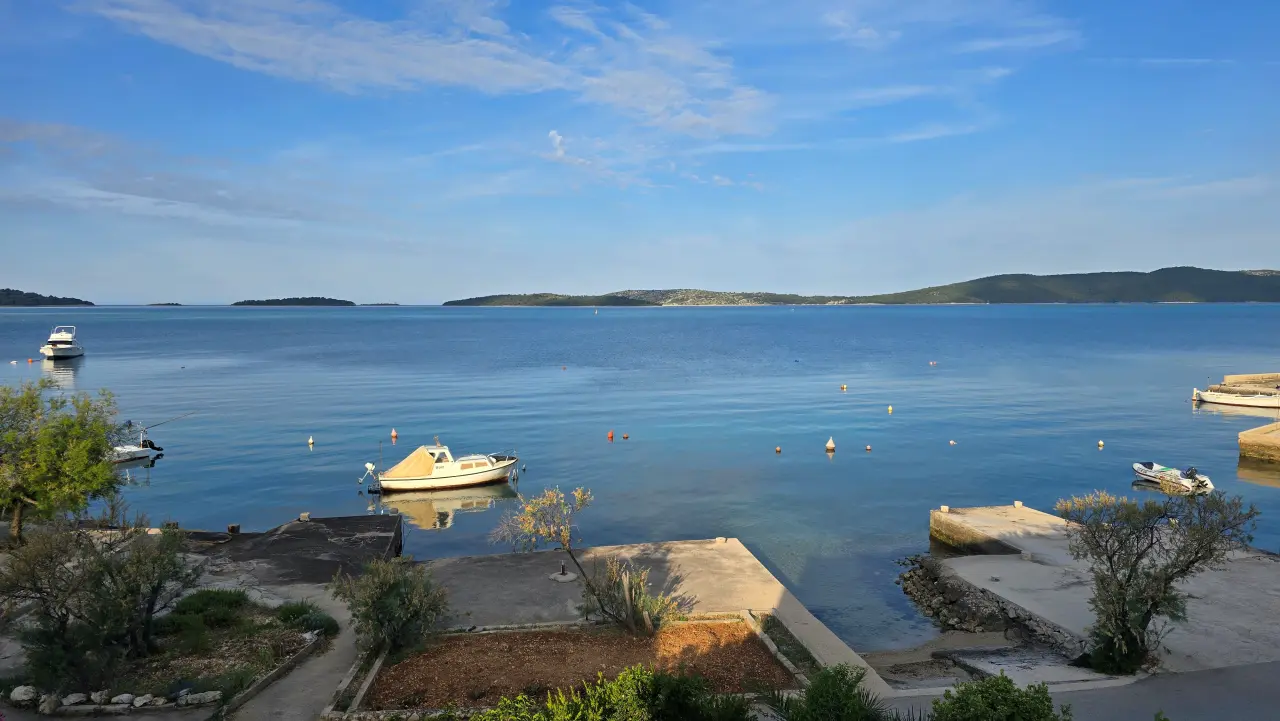
During my stay in Brodarica, I loved the proximity to the sea, it made swimming incredibly easy and enjoyable. Dining out was also a highlight; prices here are more affordable compared to Split or Zadar.
One unique experience during my visit was caring for 20 turtles—a first for me! 😁
Our Visit to Krapanj and the Sponge Museum
Our visit to Krapanj came about when we connected with Milena, the owner of the Diving Museum, which focuses on the island’s sponge diving heritage.
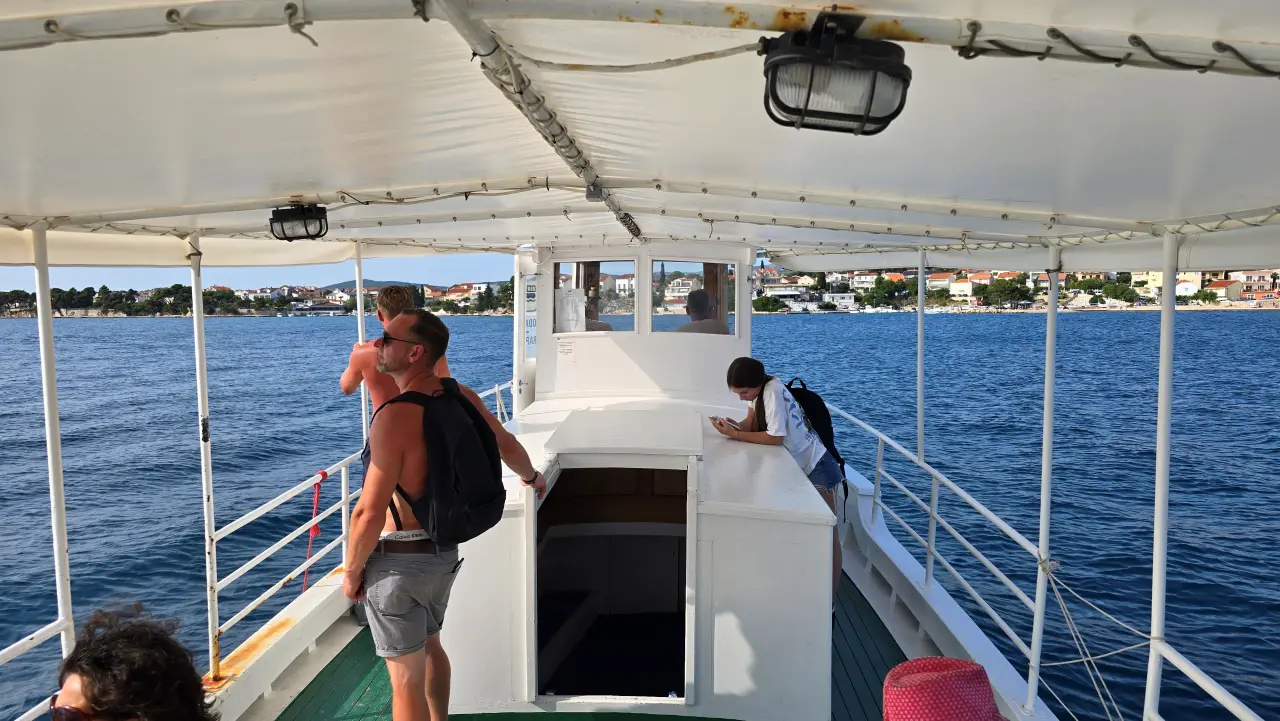
We started our trip from Brodarica, where a frequent boat service connects to the island. The ticket for the 5-minute boat ride cost a mere €1.5. The sailing was delightful, despite the noise from the trusty old diesel engine. 😉 Upon arrival, we set out to find the Diving Museum, which was easy to locate, just a few hundred meters from the dock.
Milena warmly greeted us at the museum’s entrance. After introductions, we dove into the fascinating story of her family’s sponge diving legacy on Krapanj.

What I Learned at the Diving Museum
Here are some highlights from our visit:
- Krapanj boasts a 300-year history of sponge harvesting, initially using spears.
- Milena’s family has been sponge fishing since her husband’s great-grandfather, Roko Tanfara, began in 1896.
- Early diving suits weighed a staggering 85 kg! Today, divers use modern equipment, including ROVs (remotely operated vehicles).
- Milena’s husband dives as deep as 100 meters.
- The best sponges are found at depths of 30 meters or more.
- Sponges are harvested sustainably, ensuring new sponges grow in their place.
There’s so much more to discover! To get the full story of Krapanj’s divers, visit the museum or watch the video above. (Spoiler alert: it’s truly fascinating!)
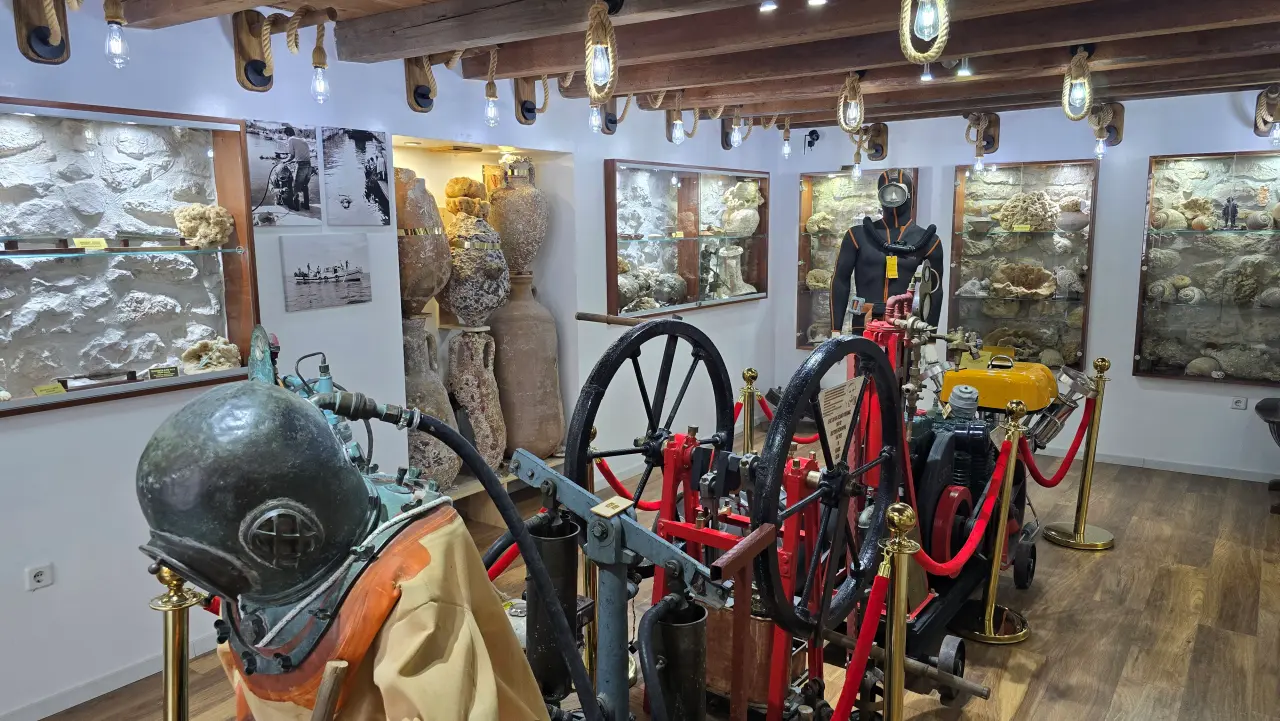
Sponge and Coral Products
In addition to running the Diving Museum, Milena and her family craft products from the sponges they harvest. Until recently, they also harvested coral and made products from it. Their shop offers unique items, including:
- Natural sponges in various sizes
- Soap with a sponge inside
- Jewelry made from coral
- Unique handmade neckties
- And much more
In the past, the family harvested up to 1 ton of sponges, exporting them to other countries—even NASA purchased some! Now, they limit harvesting to 200 kg to maintain the highest quality for their shop’s products.
You can visit their website here to explore their offerings. While they don’t offer online sales, you can call or email to order products.
Visiting Milena and her family was incredibly educational. I learned so much about sponges, Krapanj’s diving history, and the sustainable practices behind it all. It was a completely new and fascinating experience for me. A big thank you to Milena and her family for sharing their story!
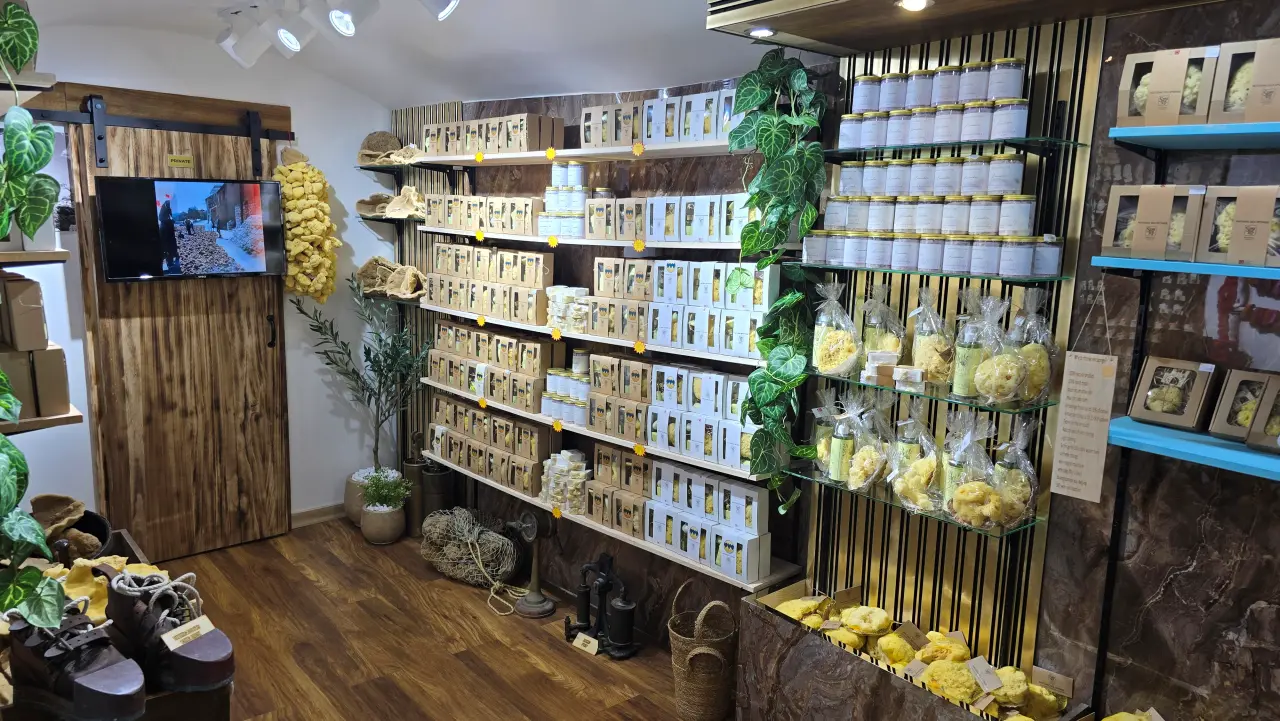
Exploring Krapanj
After visiting the Diving Museum, we decided to explore Krapanj Island before returning to Brodarica. Krapanj is a small island, measuring about 900 meters at its longest point and 600 meters at its widest.
Almost all the houses on the island face the mainland, creating a picturesque coastal vibe. The seaside promenade is lined with several restaurants and coffee bars, I counted around six or seven.
In the video, I estimated Krapanj had about 300 inhabitants. After checking, I learned the last census recorded only 166 residents, so I was a bit off!
The island offers plenty of beaches, with shallow waters at the north end, making it ideal for relaxed swimming. Notably, there are no petrol cars on the island, except for the garbage truck, which adds to its tranquil charm.
Accommodation on Krapanj primarily consists of private apartments, though there’s also a hotel with a diving school for those interested in underwater adventures.
Practical Tips for Visiting the Diving Museum
- Parking near the port in Brodarica is scarce, so plan accordingly.
- The Diving Museum is open year-round, but outside the main season, prior contact by phone is required.
- For larger groups, it’s recommended to contact the museum in advance.
Entrance to the museum is free of charge.
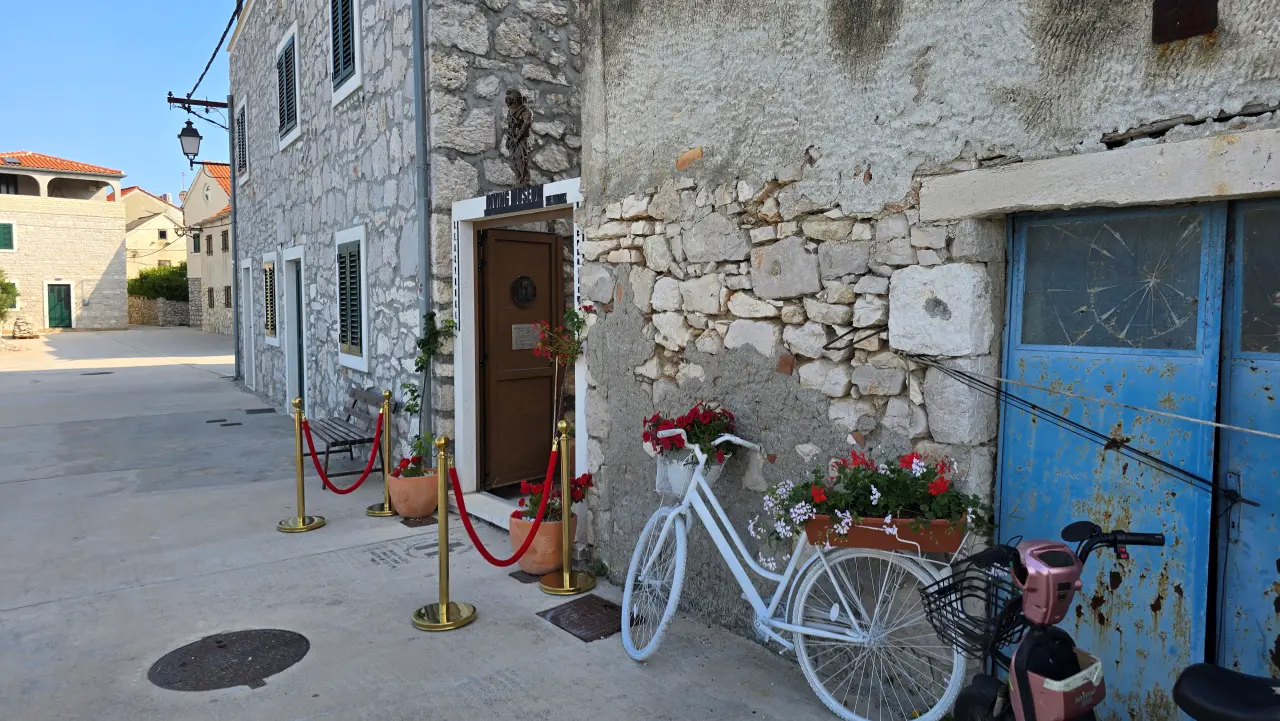
Final Thoughts
I was thrilled to finally visit Brodarica and Island Krapanj, and I truly enjoyed every moment. Brodarica is an excellent holiday destination, especially for families with kids. The proximity to the sea makes it incredibly convenient, you can simply walk to the beach without worrying about parking.
Krapanj is perfect for a lunch and a visit to the Diving Museum, or a quiet beach day away from the crowds. The short boat ride adds a charming touch to the experience.
